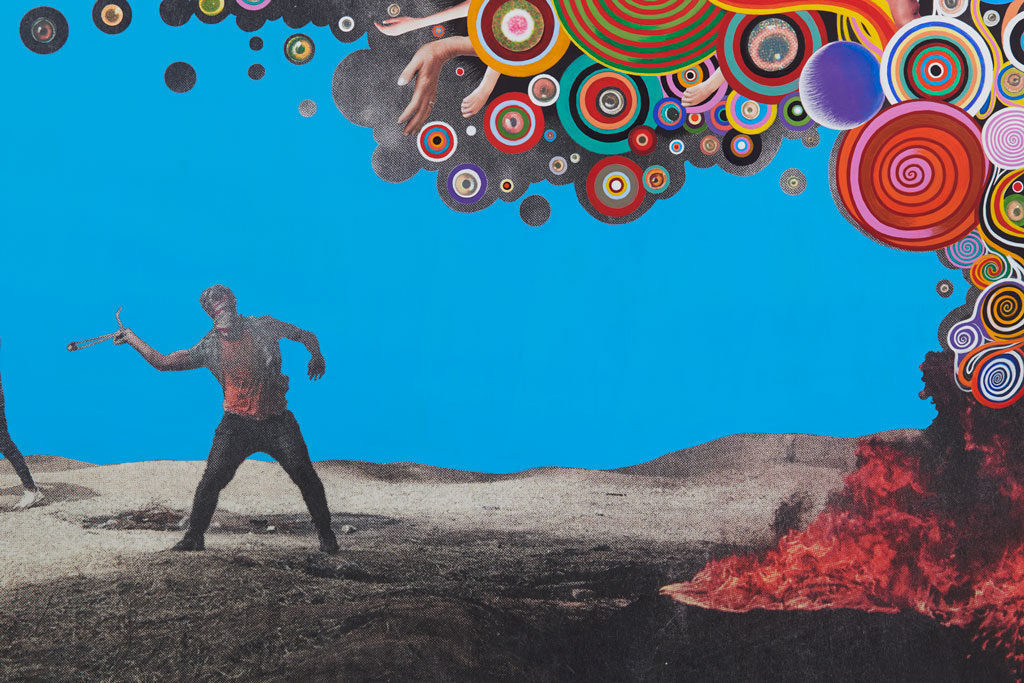The Joslyn Art Museum’s recent exhibition of selected work by Fred Tomaselli (NA 2018), curated by Karin M. Campbell, featured his ongoing New York Times collage series, spanning from 2005 to more recent works dating to late 2018. Tomaselli acts as a visual editor, cropping and recomposing cover stories—many of which feature reporting of controversial contemporary events—while communicating his leftist political views in his highly recognizable style and art historical approach. The pieces were presented out of chronological order, and while they jumped from year to year, most were from this decade.
Tomaselli’s approach in this series is characteristic of his earlier work from the 1980s and 1990s. Some virtually resemble work that brought him widespread fame in the art world, like Brooklyn eyebird, 1998. Sept. 28, 2018, 2018, for example, has Tomaselli’s signature characteristics like the pitch-black background and the collaged patterning using vivid hues. But there are changes from his earlier work seen in his surface approach. His previous works have a tactile quality because they are inset with real marijuana leaves, hallucinogenic drugs, and dead insects, while works in his New York Times series are remarkably flat, relying on the rhythmic application of color and magazine cutouts to depict cosmic and spiritual themes.
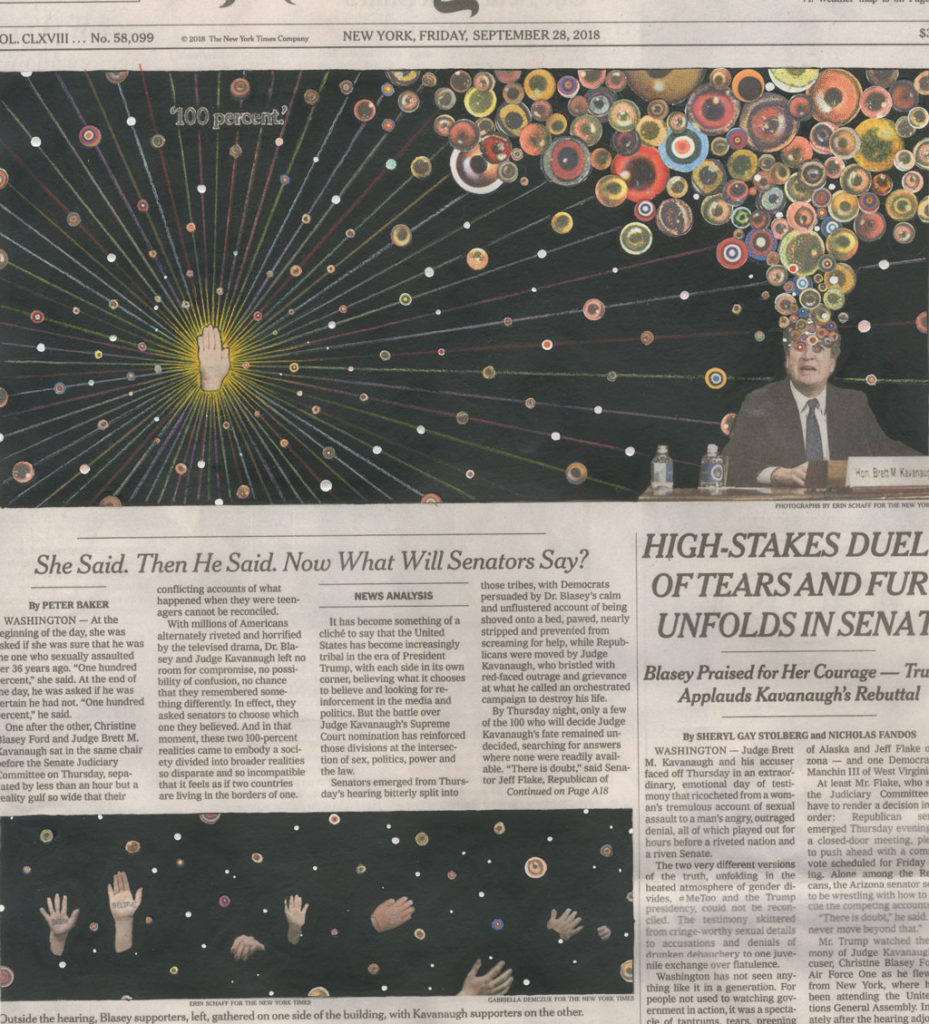
These works, while visually stimulating, are not created with the sole intention of retinal pleasure. Marcel Duchamp and his theories about the readymade are evoked with Tomaselli’s use of the New York Times as material, questioning authenticity and originality. The series uses newspapers as an artistic medium, similar to Duchamp’s use of urinals, stools, shovels, etc. for his art. Tomaselli uses this historical reference and takes a postmodern approach to mixed media, while refusing to think of art as separate from the social and political.
With the alterations the artist makes to the newspapers, these works could be considered rectified readymades. Mar. 25, 2017, 2018, exemplifies this, as Tomaselli added concentric circles throughout the captioned image, leaving everything within the image’s borders untouched. This way, the newspapers retain some of their original use as tools to spread information.
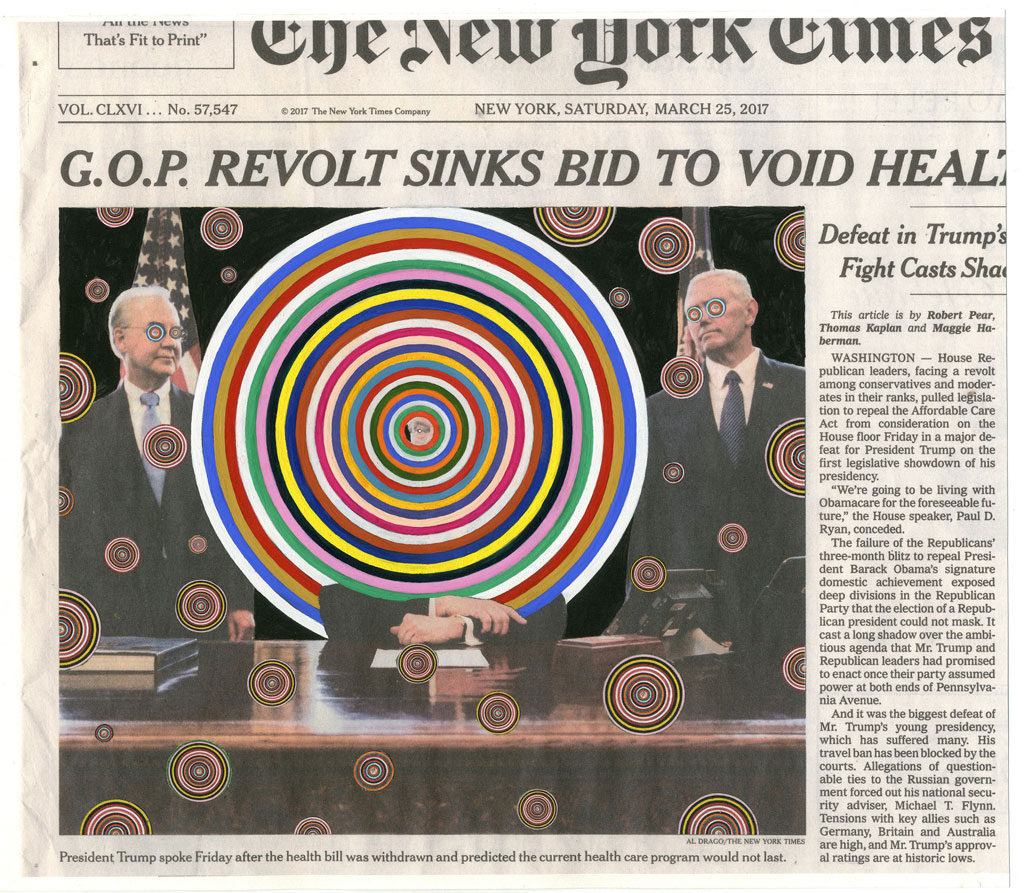
Tomaselli also hints at On Kawara’s Today series, in which the artist obsessively painted each day’s date in plain text, but Tomaselli does not approach his works as compulsively as Kawara. Every Tomaselli newspaper shows the date and includes a brief description of the modified image, marking the work in time, but the process is not a daily ritual. He explains, “I don’t work like this every day… I intuit my way into particular front pages, without a clear-cut strategy or an agenda. One work can take weeks to make. There are a lot of false starts.”
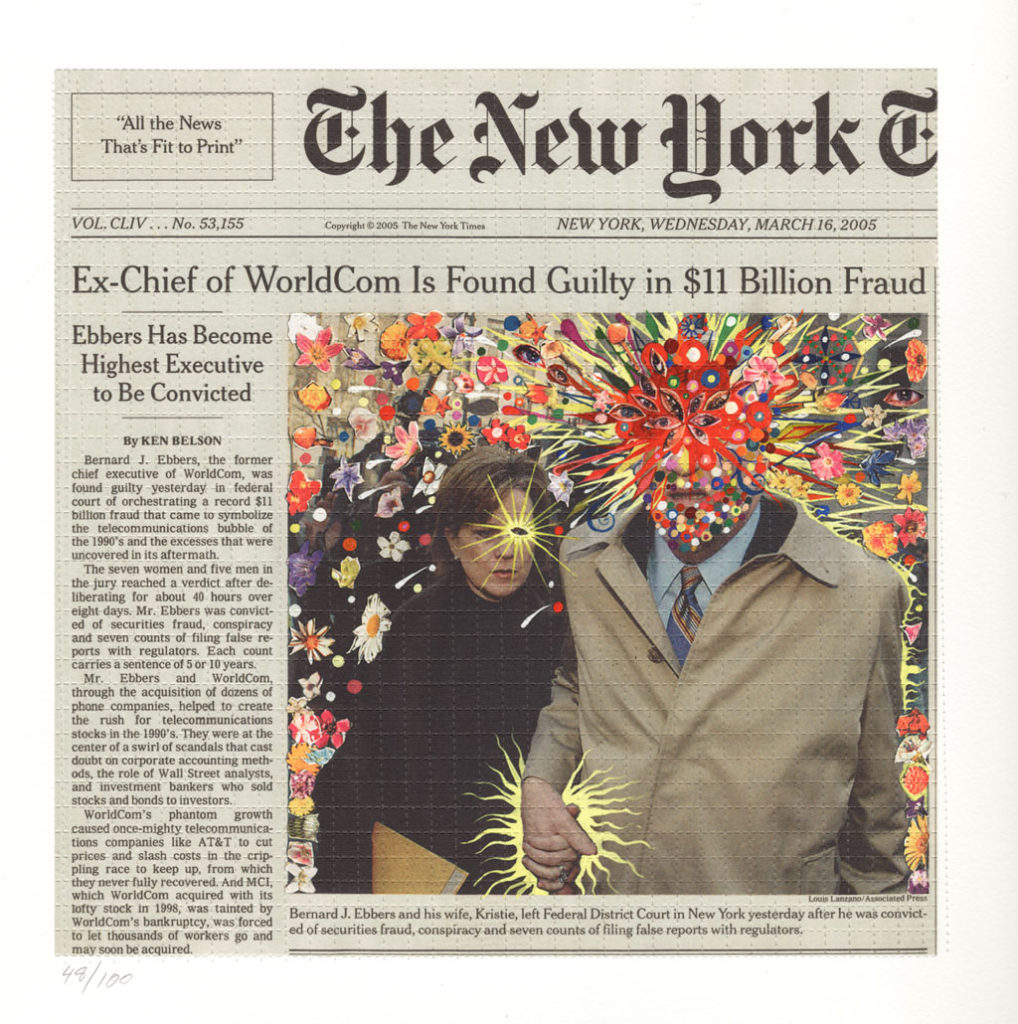
Guilty, 2005, contains many layers of art history. The original newspaper features Bernard J. Ebbers, who was convicted of committing an $11 billion fraud as the CEO of WorldCom, holding his wife’s hand while he is perp walked away from “the Eden of Finance,”1 as put by Tomaselli. The original image captured Ebbers with a confused and repulsed face after being convicted of fraud in federal court, and is now covered by the artist with a collage of flora and eyes. His wife, Kristie, grasps his hand as she wears a face of defeat while attempting to look unfazed. Their clasped hands with flowing rays of light are otherworldly. The work evokes Masaccio’s Expulsion from the Garden of Eden from the early 1400s, depicting the gesturing Adam and Eve banished from the biblical Garden of Eden. This was not the only instance Tomaselli borrowed from Expulsion. A work from 2000, Untitled (Expulsion) (diptych), directly takes figures from Masaccio’s Expulsion, showcasing Tomaselli’s own knowledge and appreciation of art history.
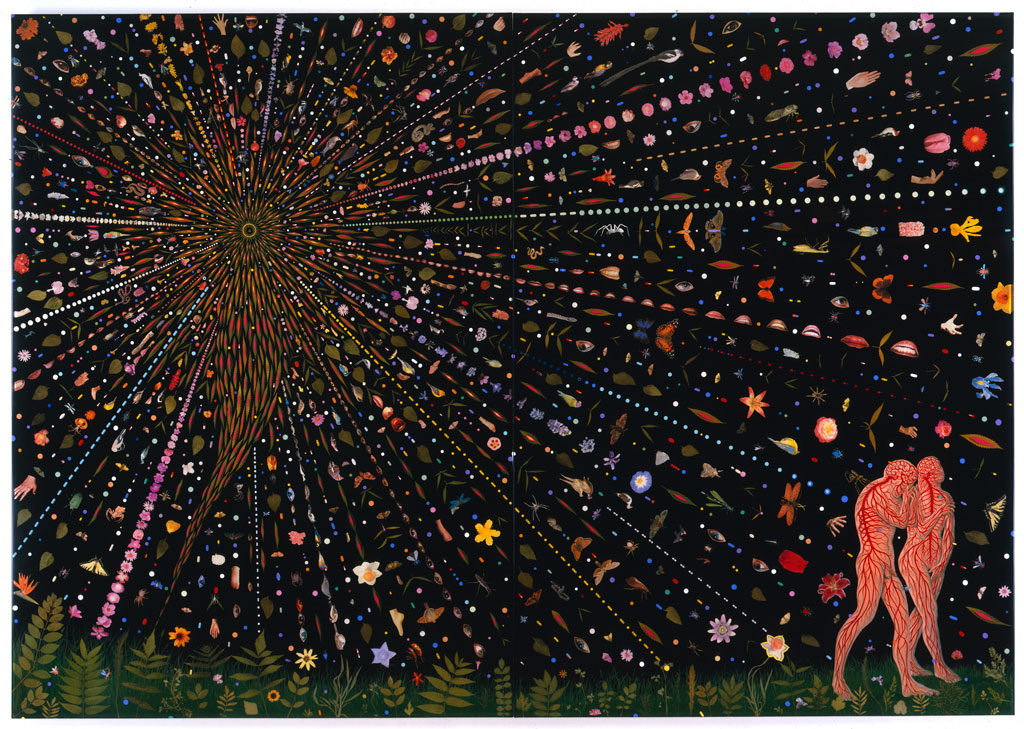
The issue of the New York Times’s subjectivity loomed throughout the exhibition. Tomaselli has remarked that he believes the New York Times is not an objective accounting of the world because, like all newspapers, it makes decisions on what to report and what to ignore.2 In response, Tomaselli’s methods make his works universal—some are even understandable without a functioning knowledge of the English language. May 15th, 2018, 2018, is an excellent example. On the lower half of the image, Steven Mnuchin, the investment banker turned Secretary of the Treasury, stands next to a gesturing Ivanka Trump, daughter and advisor to President Donald Trump. Her hand emits directional fire, burning Gazans.
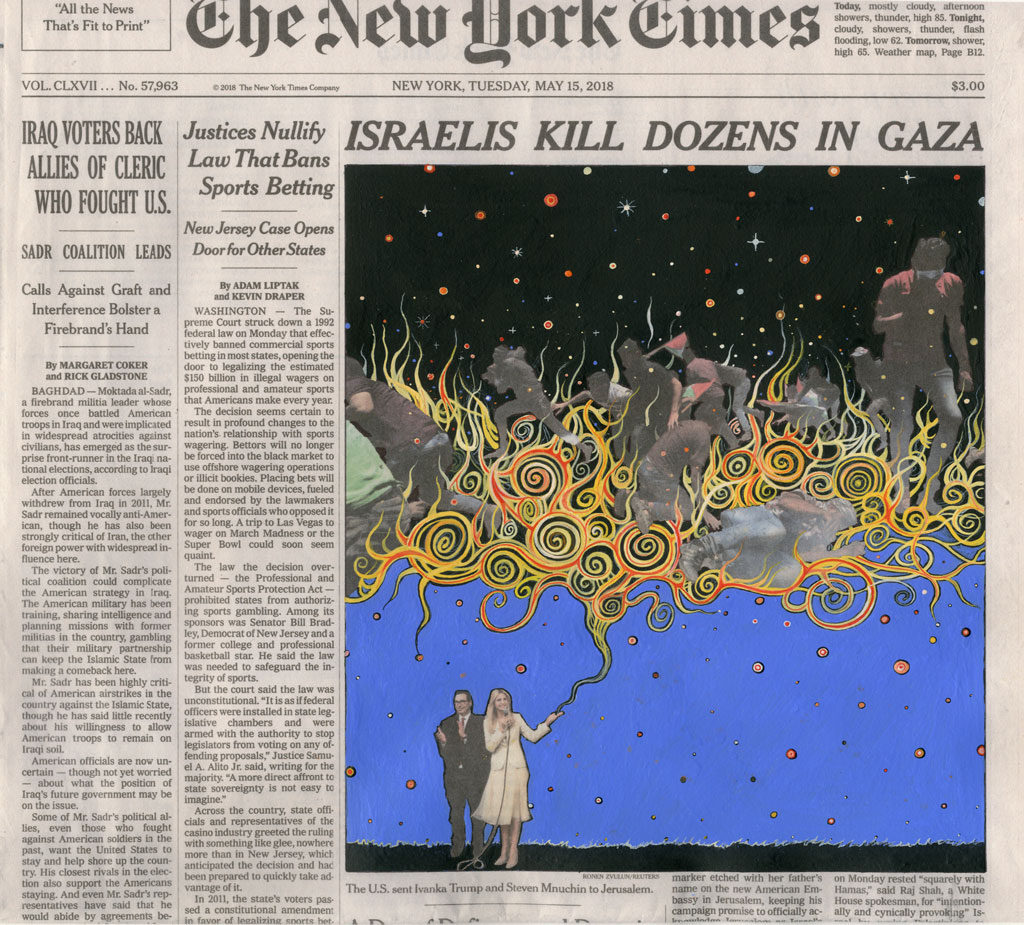
The original article reports on Trump’s relocation of the American embassy from Tel Aviv to Jerusalem, a city in the Israeli-occupied West Bank that the Palestinians would like to incorporate as part of an independent future state. Even without context, one can establish a relationship: the figures below cause the suffering of the people above.
Likewise, Saturday, Apr. 21, 2018, 2018, another of the many pieces related to conflicts in the Levant region, shows a constructed image by Tomaselli. A David and Goliath scene is shown with two human figures battling a wall of cosmic fire. Tomaselli kept the original caption the New York Times used. It reads: “Deadly Clash at Border Fence,” with no other information.
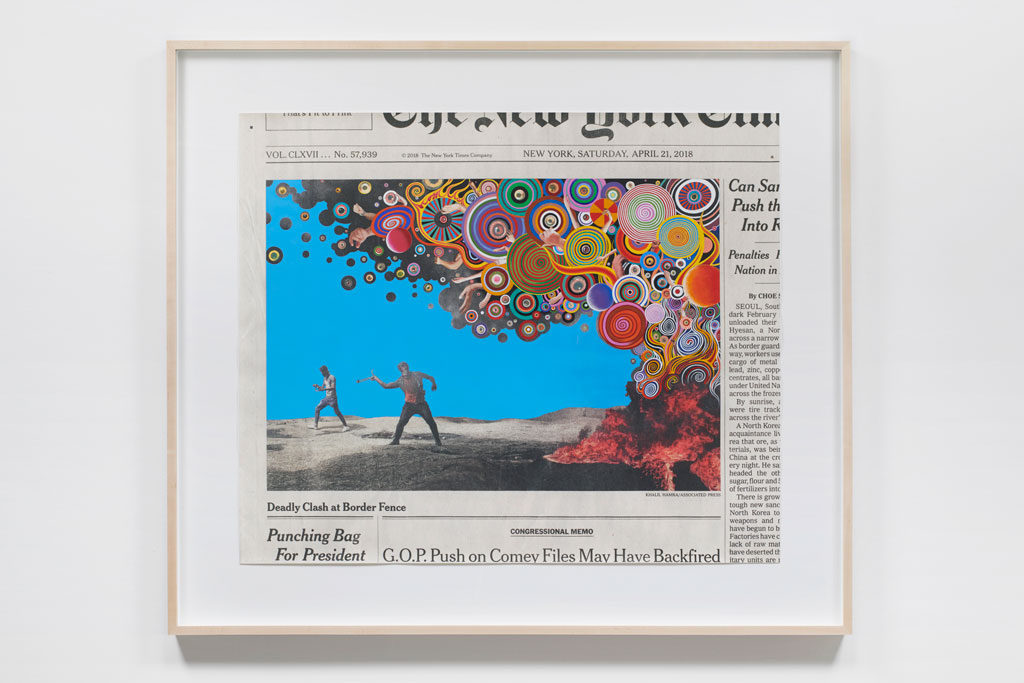
Quick googling reveals that the original image used by the New York Times for its cover was taken at the border between Gaza and Israel. Tomaselli covered the Times’s caption that reads: “Protesters hurled stones Friday at Israeli troops along the fence dividing Israel from Gaza. Israeli snipers killed four people.” Without a description of the specific area being reported on, Tomaselli makes the topic a universal subject while revealing the New York Times’s bias. Borders are everywhere in the world and they often indicate conflicts. His modified image could easily depict Western Sahara and Morocco, Ukraine and Russia, or even Mexico and the United States.
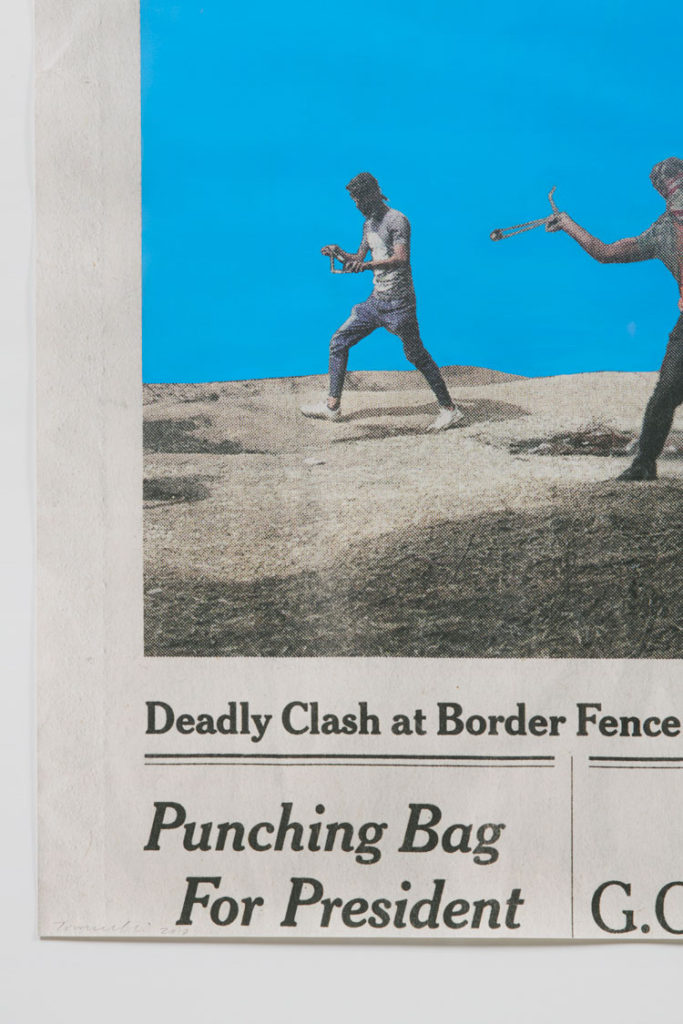
These works are not just a criticism of the New York Times, but of all media in relationship to today’s issues. How is one meant to cope with so many daily catastrophes and still function? How can one live knowing an immediate climate disaster is quickly approaching, with only a few years left to mitigate the effects? What about mass shootings that happen so often in the United States that they have become a ritual? And what about humanitarian crises, like those in Palestine? It is enough to terminally exhaust anyone.
Fred Tomaselli, although depicting horrific events, was not necessarily against hope, but was also not for it. There was no overt sense of ambition or desire for change, just a quiet, but incredibly powerful commentary on contemporary events. Overall, the show had a down-to-earth attitude, emphasizing that the events shown are not remote or isolated incidents, but historical events that we have all lived through and been touched by. One could take a deep breath in the gallery and realize that Tomaselli, just like oneself, is also exhausted with the state of the world.
Fred Tomaselli was presented at the Joslyn Art Museum in Omaha February 2 – May 5, 2019.
Jonathan Orozco is an undergraduate art history student at the University of Nebraska Omaha. His interests include the study of contemporary fashion design and criticism of fashion media.
